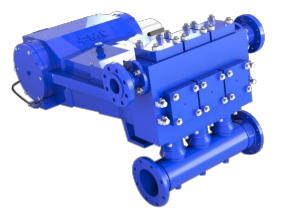How to maintain piston and plunger pumps
- Using sight glass to check oil levels
- Open the valve box: this will allow you to check the gasket is clean and undamaged.
- Check each valve in order to verify that the surface is intact and if the steel core is strongly connected to the outside of rubber.
- Check the valve seats: they need to be smooth; and it is key to check that there aren't any foreign objects in the manifold under the lower valves (this could cause a reduction in the flow rate).
- If there is a leakage you need to tighten the ring nut. If the problem continues to persists, this may be an indicator to replace the teflon-coated rope.
- Check that the drive belt is tight. Increase the tension by adjusting the screw.
- Check the flow rate of your pump: if performance is low this may suggest that the piston gaskets are worn and must be replaced
- Check the status of the flow inverter: bring the lever to the centre and check that the valve is intact. If this seal is not in good condition you could have a remarkable decrease in performance.
- Finally, you can lubricate the wheels in order to make moving the pump easier.
